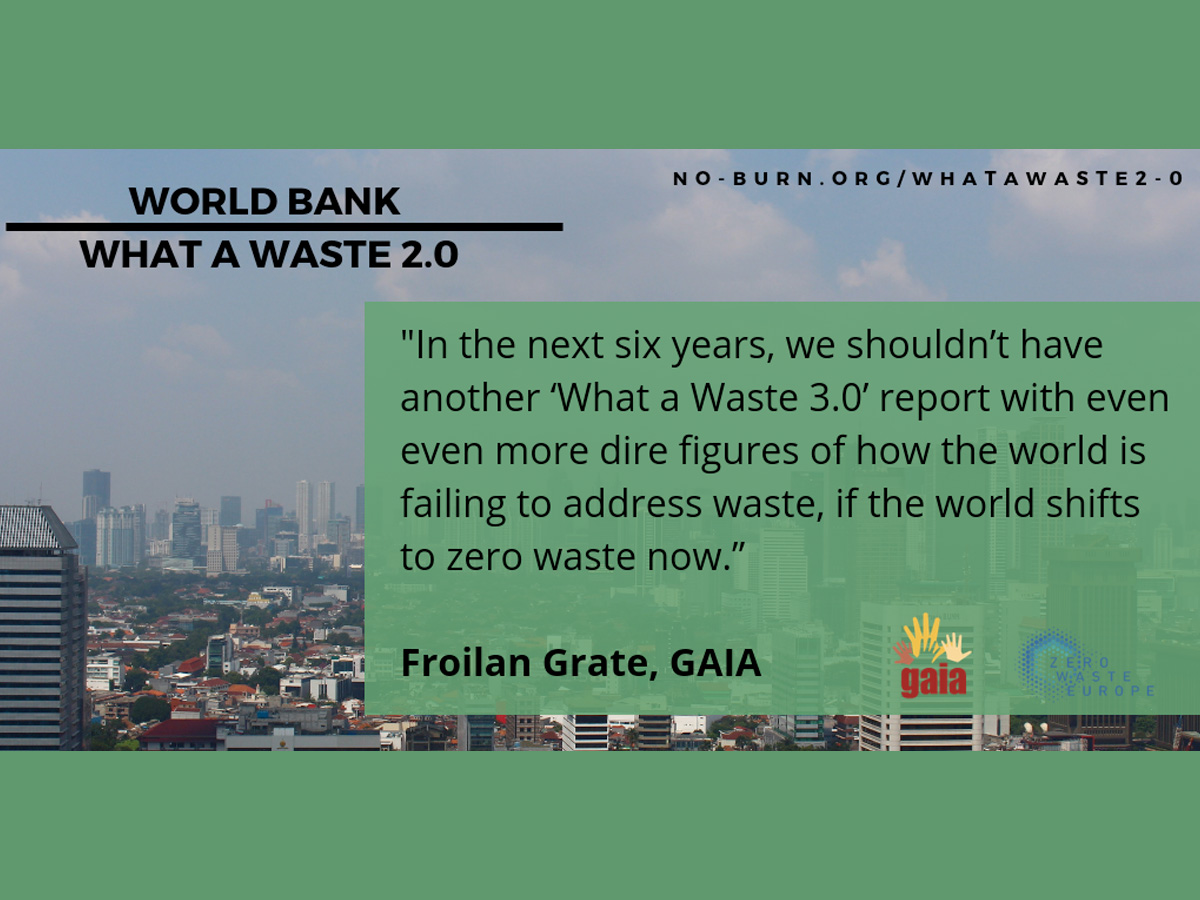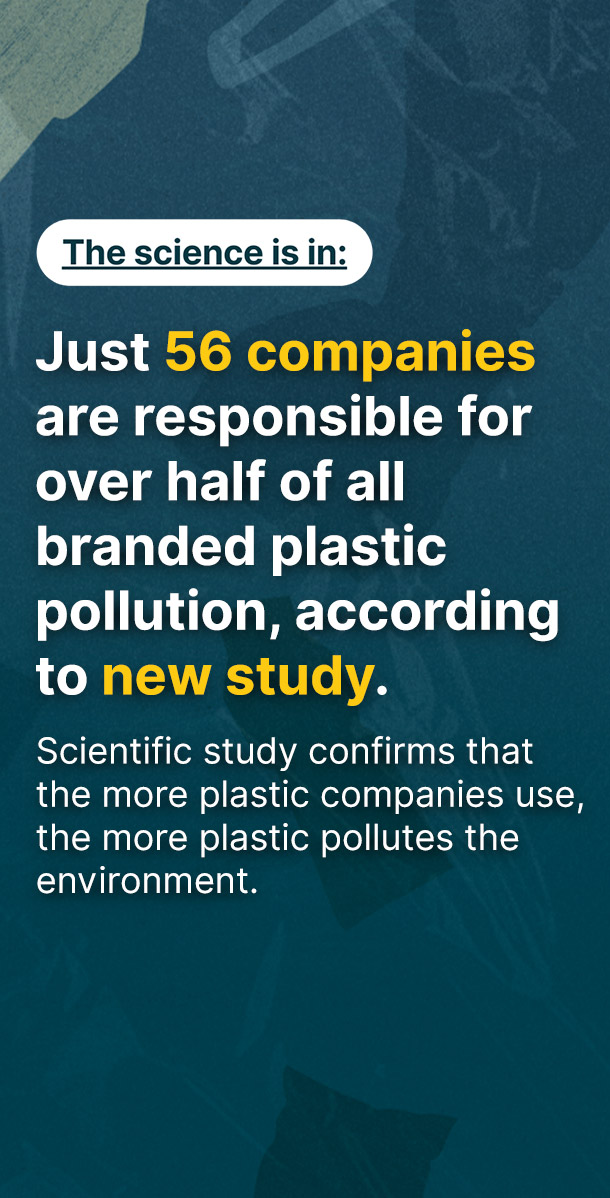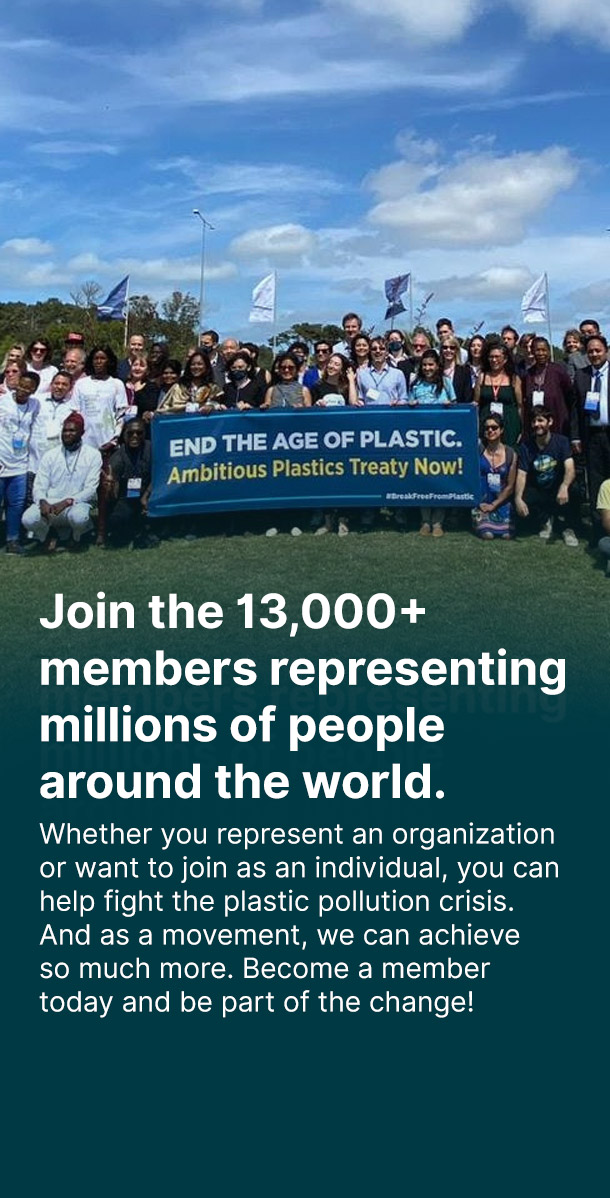FOR IMMEDIATE RELEASE: October 2, 2018, 10:00 am Pacific Standard Time
The new World Bank report, “What a Waste 2.0,” gives a clear and indisputable case for waste reduction, according to an international network of NGOs and waste experts, the Global Alliance for Incinerator Alternatives (GAIA). The group underscores that the world’s mounting waste problems can and must be avoided—and called on governments and development banks to put a bigger focus on proven waste reduction approaches and a halt to unsustainable waste management systems that incentivize waste rather than reducing it.
“With its new report, the World Bank sets down an unassailable argument that the world needs to focus urgently on serious waste reduction,” says Christie Keith, Executive Director at GAIA. “The report also provides very strong evidence that decades of business-as-usual waste management systems– such as landfilling and incineration—have failed to make any dent on the garbage crisis, and in fact, have worsened the problem. Clearly, we need new systems that focus on preventing waste, rather than failed systems that attempt to deal with waste only after it is in existence.”
“What a Waste 2.0” presents the challenging realities of the world’s current and projected waste generation. The report states that plastic is an increasing threat in the waste stream, making up 12% of the global waste composition. 40% of the plastic produced worldwide is in the form of single-use packaging.₁ Overall, a frightening 81% of the materials we discard are wasted, whether in landfills, open dumps, or incinerators. GAIA believes that the presence of these waste treatment facilities have abetted, rather than minimized, waste generation.
Instead of last-resort approaches like landfilling and incineration, highly effective preventive measures such as zero waste systems have been employed successfully in hundreds of cities by GAIA members all over the world.
“Solving the waste problem starts with the shift away from business-as-usual waste treatment systems,” states Joan Marc Simon, Executive Director of Zero Waste Europe. “By doing this, and adopting zero waste resource management systems, our members have led the way to meaningful waste reduction in their communities and cities through policy advocacy, citizen engagement, corporate accountability and design innovation.”
One example is the city of Roubaix in France where 25% of households participating in the zero waste pilot were able to reduce their waste generation by over 80%, and 70% reduced their waste by 50%. Many other cities have similar experiences of successful waste reduction programs.₂
“Zero waste systems that are decentralized, regionally appropriate, and community-led are proven solutions that are working successfully to reduce waste volumes not only in Europe but also in Asia, ” says Froilan Grate, Executive Director of GAIA Philippines.
Unlike expensive industrial waste management approaches, a city’s transition to zero waste costs considerably less and can take as little as two years to set up. For example, one zero waste project in the Philippines averages at $2.30 per person per year. GAIA has estimated that an initial influx of $30 million could provide zero waste programs for the entire Metro Manila area over two years, after which the capital would be paid back using the dramatic savings over current waste management expenditures, paving the way for further investment in zero waste systems.
Grate concludes: “With ‘What a Waste 2.0,’ the World Bank is repeating the same alarm bells it raised in its last report six years ago, but since then things have only gotten worse. We hope the World Bank along with governments and other institutions heed the message of these reports and massively shift all funding and action to waste reduction and zero waste—while phasing out wrong-headed approaches like landfilling and incineration, which led us into this mess in the first place. In the next six years, we shouldn’t have another ‘What a Waste 3.0’ report with even even more dire figures of how the world is failing to address waste, if the world shifts to zero waste now.”
###
₁ In partnership with the #breakfreefromplastic movement, GAIA members all over the world participated in waste and brand audits in time for World Clean-Up Day earlier this month, joining movement members in 6 continents and over forty countries. Through these brand audits over 250,000 pieces of plastic waste was collected worldwide.
In a brand audit, participants count the number of plastic items found in clean-ups that are associated with specific brands, and hold the most prevalent brands accountable for their role in the plastic pollution crisis. Unilever, Nestle, and Procter & Gamble were the most commonly found brands at cleanups in the Philippines. For more information, visit breakfreefromplastic.org.
₂ In the Philippines, all residents of Tacloban City now enjoy access to regular waste collection, compared to only 30% of residents two years ago, and are composting or recycling 64% of materials collected (from 2.5% previously) thanks to its zero waste program. The city also reduced its environmental leakage from 52% (105 tpd) of total waste to just 2.5% (5 tpd).
Contact:
Claire Arkin, Campaign and Communications Associate, GAIA, claire@no-burn.org, 510-883-9490 ext: 111




